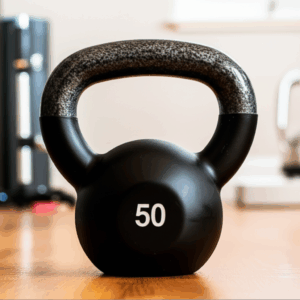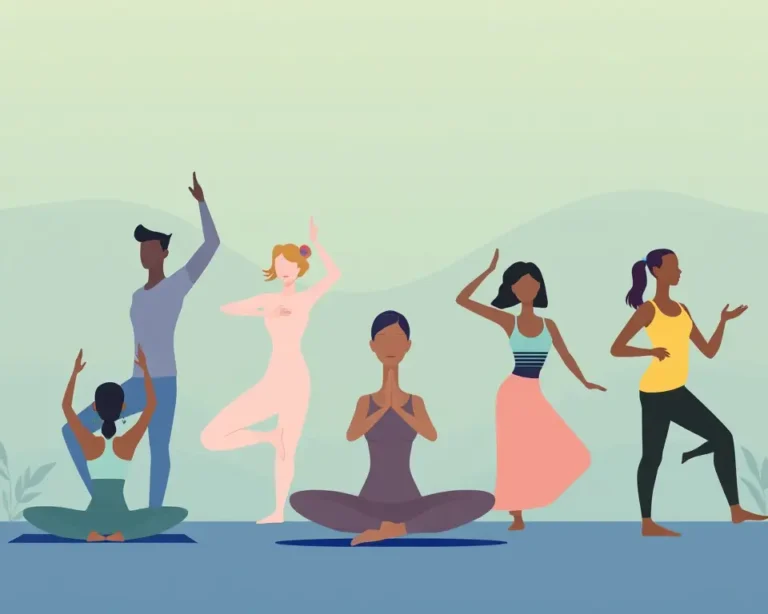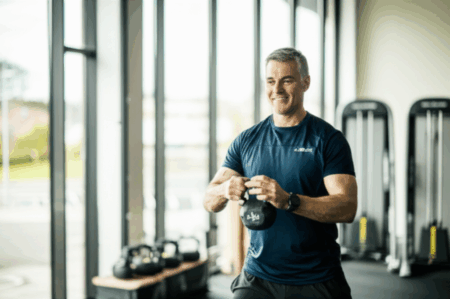Yoga, an ancient practice rooted in spiritual growth and mind-body connection, is increasingly recognized as a valuable component of a well-rounded fitness routine. Beyond its reputation for flexibility and relaxation, yoga offers a wide array of physical and mental benefits that can complement and enhance other forms of exercise. Integrating yoga into your fitness regimen can lead to improved strength, balance, flexibility, stress reduction, and overall well-being.
Understanding Yoga: More Than Just Stretching
Yoga is often misunderstood as simply a stretching exercise. However, the physical movements (asanas) are just one aspect of a broader practice that encompasses breathwork (pranayama) and meditation. This holistic approach distinguishes yoga from other forms of exercise that primarily focus on physical conditioning.
Key Components of Yoga
- Asanas (Postures): Performed in a slow and steady manner, asanas promote flexibility, strength, and body awareness. Holding postures engages multiple muscle groups, enhancing stability and balance.
- Pranayama (Breath Control): Conscious and deep breathing techniques are integral to yoga. Pranayama increases oxygen supply, reduces stress, and promotes relaxation.
- Meditation: Yoga encourages mindfulness and concentration, shifting the balance from the sympathetic nervous system (fight-or-flight response) to the parasympathetic nervous system (relaxation response).
Physical Benefits: Strength, Flexibility, and Balance
Yoga offers a multitude of physical benefits that can improve your overall fitness.
Enhanced Flexibility and Range of Motion
A key component of yoga involves stretching muscles, which can improve flexibility and balance. Regular practice gradually improves flexibility, reducing the risk of strains and muscle tears during other physical activities. By targeting specific muscle groups and joints, yoga postures can increase range of motion, which is particularly beneficial for individuals with joint-related issues or sore muscles.
Increased Strength and Muscle Endurance
While often associated with stretching, certain yoga styles, such as Vinyasa and Ashtanga, can be strength-building. Holding various poses requires the activation of multiple muscle groups simultaneously, increasing muscular strength and improving balance. The deliberate movements in yoga can activate slow-twitch muscle fibers, which are essential for sustained efforts in endurance activities. Yoga builds muscle endurance, while increasing awareness to the muscles around joints which leads to stronger joint stabilization and prevent injuries.
Improved Balance and Coordination
Yoga emphasizes balance and coordination in every pose. Balancing poses require core strength and focus, improving overall stability. Enhanced joint position sense contributes to optimal balance and the ability to initiate and end musculoskeletal activity voluntarily.
Injury Prevention
Yoga plays a significant role in injury prevention by enhancing flexibility, balance, and body awareness. Increased flexibility and range of motion can help avoid injuries such as strains and overuse injuries. By building muscle through yoga, your body gains more stability, which is especially important for preventing falls. A regular yoga routine helps improve functional strength by moving numerous muscles and joints at the same time, decreasing the possibility of injury from a slip or fall.
Cardiovascular Health
Pranayama, or yogic breathing, can improve the functioning of the cardiovascular system. Research indicates that yogic breathing may influence the function of the heart, brain, and lungs. Regular yoga practice may reduce levels of stress and body-wide inflammation, contributing to healthier hearts.
Active Recovery
Yoga can be used as an active recovery practice after intense workouts. Gentle stretching and mindful movement help promote blood circulation, reduce muscle soreness, and speed up the recovery process. Poses that focus on the hips, hamstrings, back, and shoulders can help release tension and prevent the buildup of lactic acid in the muscles.
Mental and Emotional Benefits: Stress Reduction and Mindfulness
In addition to its physical benefits, yoga offers significant mental and emotional advantages.
Stress Reduction
Yoga offers an effective method of managing and reducing stress, anxiety, and depression. Regular yoga practice may reduce levels of stress and body-wide inflammation. Meditation, breathwork, and auditory rituals, like chanting and sound baths, have also been shown to significantly lessen tension and relieve stress. Yoga encourages one to relax, slow the breath, and focus on the present, shifting the balance from the sympathetic nervous system to the parasympathetic system, which is calming and restorative.
Improved Mental Health
Yoga has been shown to improve mental health by reducing symptoms of anxiety and depression. It may also promote adaptive thinking and behavioral activation, improving lifestyle components that affect mental health, such as sleep and nutrition. Yoga creates mental clarity and calmness, increases body awareness, relieves chronic stress patterns, relaxes the mind, centers attention, and sharpens concentration.
Enhanced Mind-Body Connection
Yoga encourages a deeper connection between mind and body. This practice involves body awareness, helping you pay attention to how different movements feel and how they impact you mentally. A strong mind-body connection is important because we are affected physically by our emotional and mental state.
Yoga as Cross-Training: A Holistic Approach
Cross-training involves pairing a variety of different exercises together to develop different muscle groups and create a well-balanced routine. Yoga is an excellent form of cross-training because it affects the body in ways that other forms of exercise do not.
Benefits of Yoga as Cross-Training
- Improved Performance: Yoga improves performance in everyday movements and athletic training.
- Reduced Injury Risk: Yoga’s focus on flexibility, balance, and body awareness can help prevent injuries.
- Promoted Recovery: Yoga promotes muscle recovery by increasing circulation and reducing inflammation.
- Enhanced Presence and Body Awareness: Yoga strengthens the mind-body connection, increasing body awareness.
How to Incorporate Yoga into Your Fitness Routine
- Warm-up: Yoga sessions can serve as effective warm-ups, activating key muscle groups to promote better performance and reduce the risk of injury.
- Cool-down: Post-workout yoga helps ease muscle tension and enhance recovery.
- Active Recovery: Weave in a dedicated yoga practice on active recovery days to soothe muscles and facilitate recovery.
Choosing the Right Style of Yoga
There are various styles of yoga, each with its own focus and intensity. Selecting the right style can help you tailor your practice to your specific fitness goals.
Yoga Styles for Beginners
- Hatha Yoga: A gentle introduction to basic yoga postures, promoting strength, flexibility, and relaxation.
- Restorative Yoga: A relaxing practice that uses props to support the body in passive poses, promoting relaxation and stress relief.
- Yin Yoga: A slow-paced style of yoga with postures held for longer periods, targeting deep connective tissues.
Yoga Styles for Strength and Endurance
- Vinyasa Yoga: A dynamic practice that links movement with breath, creating a continuous flow of poses.
- Ashtanga Yoga: A rigorous style of yoga that follows a specific sequence of postures, building strength and endurance.
- Power Yoga: A fast-paced and physically demanding style of yoga that builds strength and improves cardiovascular fitness.
Other Yoga Styles
- Bikram Yoga: Performed in a hot room to help detoxify the body through sweating.
- Iyengar Yoga: A form of yoga known for its use of props, such as belts and blocks, to achieve proper alignment.
- Kundalini Yoga: Combines postures, breathing exercises, and the chanting of mantras to awaken your kundalini energy.
Expert Opinion
Jacinta Brinsley, an Accredited Exercise Physiologist, combines her clinical exercise prescription with a holistic mind-body approach. She believes that yoga can be used as a dynamic warm-up to get the joints and muscles moving before training, as well as a cool-down to massage tender tissues from the inside out. Yoga may also contribute to your recovery, offering important preventative effects for asymmetries, tight spots, weak spots, and neuromuscular blind spots.
Conclusion
Integrating yoga into your fitness routine offers a multitude of benefits for both your physical and mental well-being. From improving flexibility, strength, and balance to reducing stress and enhancing mindfulness, yoga can be a transformative addition to any exercise program. By choosing the right style of yoga and incorporating it strategically into your routine, you can unlock your fitness potential and achieve a more holistic and balanced approach to health.







